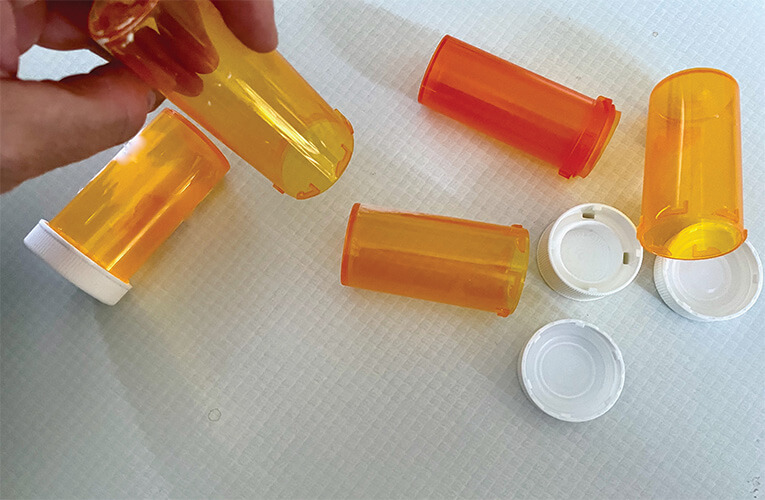We are out of time. New, effective antibiotics are required to face the real and growing global threat from resistant and too often deadly bacterial infections. According to the World Health Organization, “Antibiotic resistance is rising to dangerously high levels in all parts of the world. New resistance mechanisms are emerging and spreading globally, threatening our ability to treat common infectious diseases.” The organization adds, “A growing list of infections, such as pneumonia, tuberculosis, blood poisoning, gonorrhea, and foodborne diseases, are becoming harder, and sometimes impossible, to treat as antibiotics become less effective” [1].
Likewise, the U.S. Centers for Disease Control and Prevention calls antibiotic resistance “an urgent global public health threat, killing at least 1.27 million people worldwide and associated with nearly 5 million deaths in 2019.” It further notes that more than 2.8 million antimicrobial-resistant infections occur each year in the United States alone [2].
While research is under way in academic laboratories and at startups, new antibiotics are not making it to market (Figure 1). This is a big problem that demands our full attention and a quick resolution, asserts Michael Mahan, Ph.D., who has been immersed in antibiotic studies for more than two decades through his University of California, Santa Barbara Laboratory.

Figure 1. Increasingly resistant bacteria are quickly depleting the current antibiotic toolbox. This is a problem that needs fixing right now, according to antibiotic developer Michael Mahan of the University of California, Santa Barbara. (Photo courtesy of Leslie Mertz.)
Mahan spoke with IEEE Pulse to explain the dire need for new antibiotics, the barriers limiting the drug-development pipeline, and possible solutions to deliver these much-needed drugs into the hands of clinicians and to stem the escalating epidemic of untreatable bacterial infections.
IEEE Pulse: How would you describe the issue of antibiotic resistance today?
Mahan: We are entering the preantibiotic era. Notably, I did not say “We will soon be entering.” We are entering the preantibiotic era. There are many bacteria that do not respond to existing antibiotics, so we are already at a point where a simple cut can kill you.
Let me give you an example. Unfortunately, in the hospital, you expect to come across bacteria that are resistant to antibiotics because you have everything you don’t want in terms of resistance, including a lot of sick people exposed to a variety of antibiotics. But now we have people who are getting multidrug-resistant infections from the community—not from the hospital. For example, someone here in Santa Barbara, California, had a urinary tract infection (UTI), it got worse, she got antibiotics, they didn’t help, the infection increased, she got sepsis, and she died… from a UTI that she picked up just going about her daily life.
IEEE Pulse: If antibiotic-resistant bacteria are such an enormous problem, what is inhibiting the development of new antibiotics?
Mahan: It’s about the numbers. It costs approximately U.S. $1.5 billion and takes 10–15 years to develop and produce a new drug, but the average antibiotic revenue is less than $50 million a year. So, let’s do the math: It would take a company 30 years just to break even. Consequently, pharma companies are working on far more profitable drugs that treat long-term conditions, such as cardiovascular disease, cancer, high cholesterol, and immunological dysfunctions, and have virtually abandoned antibiotic research. That leaves academic researchers and startups to do the research on antibiotics, and in fact, 95% of antibiotic research today is done by small biotech companies [3].
IEEE Pulse: If funding is at the root of the pipeline breakdown, how can that be fixed?
Mahan: There’s a very good recent article in Nature Medicine [4] that talks about public or government funding to encourage research and development, such as a delinked subscription model where the government funds new antibiotics based on their value to public health rather than on the volume of antibiotics sold. Flexible funding for early-stage research is very important, too.
IEEE Pulse: You have experience with flexible funding through a U.S. Army-funded project that veered far from its original goal and ultimately led to the discovery of a highly effective antibiotic. Can you tell us about this?
Mahan: Yes. The Army originally funded a project using novel chemical compounds to charge a cell phone using bacteria as the energy source. When it became clear the bacteria weren’t growing well in the presence of some of these compounds. we wondered whether we could repurpose them as antibiotics. Thus, we visited the head of infectious diseases at Walter Reed Army Institute of Research for possible funding. He took a gamble on us and it worked. Without that kind of funding flexibility, which is really difficult to get, we wouldn’t have been able to do it. So this shows that it is important for researchers to have access to flexible funds, and if given to the right group, they can do amazing things.
IEEE Pulse: Is funding the only issue?
Mahan: As a society, we have to put a priority on this. For one thing, we have to reevaluate the value of antibiotics. They are worth way more than what we charge for them. That’s just reality. Another issue is we need to make laws against litigation, and we have a precedent for this in vaccines. A few decades ago, some vaccines were developed, run through trials, and had some negative results that resulted in a lot of lawsuits that stymied further vaccine development in the U.S. Now, the U.S. code has been changed so you cannot sue the company [5], [6]—you can only sue the government for a limited amount, which has resulted in the development of many useful vaccines. Such legal protection is not available for antibiotics, and we need that for pharmaceutical companies to re-engage in antibiotic research and development. Without this protection, it’s simply not going to happen.
IEEE Pulse: And you’re saying we need these changes now.
Mahan: Exactly. People are already dying from infections they are picking up in the community, and we need to get on this quickly. The problem is now. We are already out of time.
For more information, see also “Antibiotic Resistance: New Strategies Offer Promise, but Time is Running Out” in this issue.
References
- World Health Organization. (Jul. 31, 2020). Antibiotic Resistance. Accessed: Aug. 18, 2023. [Online]. Available: https://www.who.int/news-room/fact-sheets/detail/antibiotic-resistance
- U.S. Centers for Disease Control and Prevention. (Oct. 5, 2022). About Antimicrobial Resistance. Accessed: Aug. 18, 2023. [Online]. Available: https://www.cdc.gov/drugresistance/about.html
- Pew Trusts. (Mar. 2021). Tracking the Global Pipeline of Antibiotics in Development. Accessed: Aug. 17, 2023. [Online]. Available: https://www.pewtrusts.org/en/research-and-analysis/issue-briefs/2021/03/tracking-the-global-pipeline-of-antibiotics-in-development
- M. May, “How to fight antibiotic resistance,” Nature Med., vol. 29, no. 7, pp. 1583–1586, Jul. 2023, doi: 10.1038/d41591-023-00043-5. Accessed: Aug. 15, 2023.
- §300aa–22. Standards of Responsibility. Accessed: Aug. 15, 2023. [Online]. Available: https://uscode.house.gov/view.xhtml?req=granuleid:USC-prelim-title42-section300aa-22&num=0&edition=prelim#:~:text=(1)%20No%20vaccine%20manufacturer%20shall,was%20properly%20prepared%20and%20was
- Vaccine Adverse Event Reporting System. Accessed: Aug. 15, 2023. [Online]. Available: https://vaers.hhs.gov/



